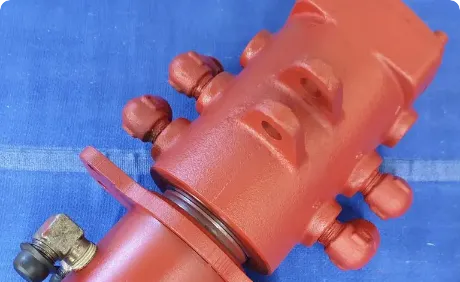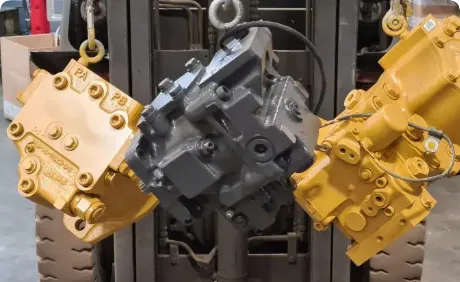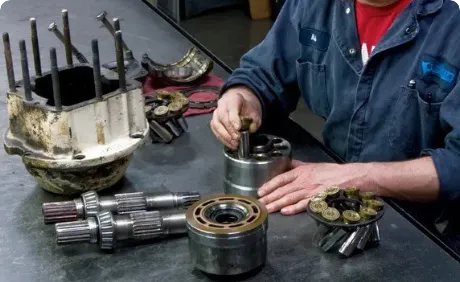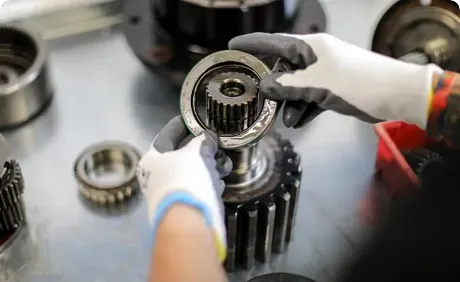We are one of the standard setters for hydraulic maintenance in China
Equipped with exceptional technical knowledge, advanced tools, and full in-house machining capabilities, we provide a flexible one-stop solution for hydraulic repairs. Over the past 18 years, we’ve developed the ability to save our customers time and maintain competitive pricing by fabricating and sourcing parts that OEMs no longer supply or support. This allows us to service not only current models, but also obsolete ones.
Our repair capabilities cover components from most major manufacturers. Contact Yshydraulic Today for a free repair quote and experience the difference our expertise makes.

Centre Swivel Joint Repair

Control Valve Block Repair
Signs You Need Hydraulic Pump Repair
Unusual Noises
A properly functioning hydraulic pump should operate with a consistent, low-level hum. When any new or unusual sounds begin to appear, it’s a clear warning sign of trouble.
Whining or Cavitation: These sounds often indicate that air is entering the system (aeration) or that vapor cavities are forming in the fluid (cavitation). Both issues can quickly damage internal components.
Knocking or Banging: Harsher noises typically signal more serious internal problems, such as heavily worn parts or contamination inside the system.
Decreased Performance
A noticeable drop in machine performance is one of the clearest indicators of hydraulic pump failure. This reduced efficiency can show up in several ways:
Slower Operation: Longer cycle times often result from reduced pump flow.
Loss of Power: When the pump can’t generate adequate pressure, the machine’s lifting capacity and overall power decline.
Erratic Movements: Jerky or inconsistent motion usually points to unstable fluid pressure from a failing pump.
Fluid Leaks
Any sign of leaking hydraulic fluid warrants immediate investigation. Leaks may be external or internal.
External Leaks: These are easier to identify because fluid becomes visible around the pump housing, fittings, or seals.
Internal Leaks: Harder to spot, but just as damaging. A drop in pressure or performance—without any visible fluid—often points to an internal leak.
Overheating
Hydraulic systems naturally produce heat, but temperatures that rise too high indicate a major issue.
Causes: Contaminated fluid, restricted flow, or internal wear that increases friction can all lead to higher operating temperatures.
Consequences: Excess heat degrades hydraulic fluid, damages seals, and accelerates internal wear. Temperatures above 180°F (82°C) are particularly harmful.
Contaminated Hydraulic Fluid
The condition of your hydraulic fluid often reveals the overall health of your system.
Milky Appearance: Usually caused by water contamination, which leads to corrosion and reduced lubrication.
Foaming: A clear indicator of aeration—air entering the system.
Metal Particles: Finding metal shavings or debris in the fluid signals serious internal wear and likely pump failure.
By staying alert to these warning signs, you can catch hydraulic pump issues early and schedule appropriate repairs before major damage occurs. Consistent maintenance and routine fluid analysis are also essential for maximizing the lifespan of your hydraulic system.
* PLEASE ENSURE ALL PARTS ARE CLEANED, DRAINED OF OIL AND FITTINGS REMOVED BEFORE SENDING



